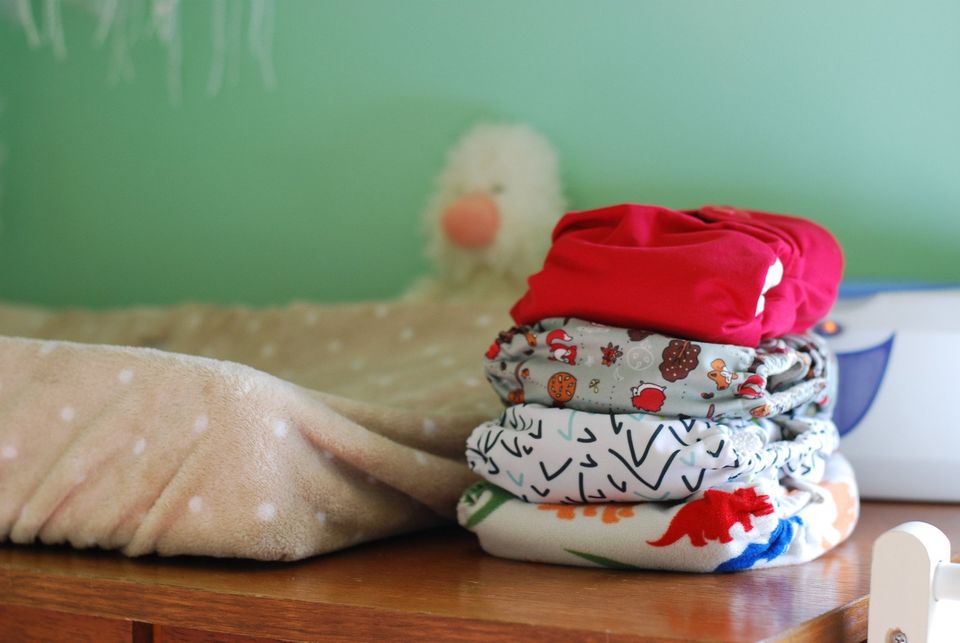How to Avoid Diaper Rash (and How to Treat It)
How do I prevent diaper rash and how do I treat it?
It started as a few red dots. Then more. Then full-blown diaper rash! One day your baby had soft unblemished skin, and the next that adorable baby bum turned into an inflamed and painful breakout. Diaper rashes can flare up in an instant and puzzle even the most experienced parents.
We’ve all been there:
The label on the ‘best diaper cream’ boasts relief in minutes!, but it’s not living up to the slogan. It’s heartbreaking to see your little one writhe in pain with each diaper change. So, we’re here to offer a few tips on how to avoid diaper rash. Even so, diaper rash is something most babies will inevitably experience at some point. As a bonus, we’ll offer a few tried-and-true solutions to end the cycle.
What is Diaper Rash?
Technically speaking, diaper rash is irritant diaper dermatitis , but I don’t think I’ve even heard a doctor refer to it that way. Diaper rash is simply a patch of red and inflamed skin. The causes of diaper rash vary, and some babies are more prone to it than others.
Common causes include:
· Infrequent diaper changes
· Diarrhea
· Antibiotics
· New foods
· Diaper brand or fit
· Chafing and rubbing
· Sensitive skin
· Bacterial or yeast infection
· New skincare products
How to Avoid Diaper Rash
The first step is identifying typical causes of your baby’s diaper rashes. If you know that your little one has an upset stomach or is taking antibiotics, he or she may be at risk for developing a rash. Keep an eye on your baby’s diaper, and check it every hour. Change the diaper as soon as it becomes wet or soiled.
If your baby is susceptible to diaper rash, stick to hypoallergenic products for sensitive skin. Many fragrances or additives can irritate your baby’s delicate skin. Choose products that are free from dyes and perfumes. Also, stay away from products with alcohol as it will burn and irritate your baby’s bum even more. Water wipes and warm wet paper towels work well, too.
How to Sooth & Treat Diaper Rash
1. Air Dry
I know this one sounds a little risky for non-potty trained kiddos (hence the diaper, right?), but let that little booty get some air when you can. The best time is right after a diaper change. They’ve already wet or soiled their diaper, so they’re less likely to go again right away. Let them run around on uncarpeted floor or maybe in the backyard, if possible. Air drying ensures no moisture will get trapped inside.
2. Clean with Tissues
If your little one winces at the touch of a wipe, try adding some diaper cream or petroleum jelly to soft, dry tissues to gently wipe the area clean. Then, you can rinse with warm water and mild soap to eliminate bacteria.
3. Change Often
Change your baby’s diaper as soon as you notice it becomes wet or soiled. Ammonia in urine is very acidic and irritating.
4. Rinse Regularly with Warm Water
Rinsing with warm water is the best (and least painful) way to remove all irritants and bacteria.
5. Bathe with Baking Soda
2 Tablespoons of baking soda in a warm bath for 10 minutes may provide instant relief. Baking soda neutralizes acidity and helps clean away irritating germs.
*Baking soda can be absorbed through the skin, so stick to these safe guidelines.
6. Keep Diapers Loose
Over tightening diapers prevents airflow and causes chafing.
7. Apply Barrier Cream or Ointment
Some of the best barrier creams include zinc oxide, petroleum jelly, and bentonite cream. Stay away for talcum powder because it could harm your baby if inhaled. To keep diaper cream from sticking to the diaper, apply a thin later of petroleum jelly on top.
8. Avoid Irritants
Stay away from products that may smell good but irritate your baby’s sensitive skin. Fragrance-free and dye-free is usually the way to go. If your baby’s skin is extra sensitive, consider a hypoallergenic laundry detergent as well. If using cloth diapers, avoid fabric softener and dryer sheets.
9. Consider Alternative Treatments
Witch hazel, calendula, aloe vera, and bentonite clay may speed up healing, but check with your doctor first.
(Source: Mayo Clinic
)
When to See a Doctor for Diaper Rash
Usually, diaper rash begins clearing up on its own without medical intervention within 2-3 days. However, it may be time for a doctor’s visit if you notice any of these symptoms after trying the at-home treatments above.
Call your pediatrician if:
1. The rash continues to worsen after 2-3 days.
2. You notice pimples, blisters, bumps, or sores (this could be a sign of an infection that required prescription ointment).
3. The rash spreads to other parts of the body (abdomen, legs, etc.). This is not diaper rash and may need medical attention.
4. Baby develops a fever.
5. Your child is inconsolable due to the rash.
6. You think it may be an allergic reaction (i.e. hives).
7. The rash appears within the first few weeks after birth.
8. Your child is bleeding.
(Source: Associates in Dermatology )
Although diaper rash is an unpleasant experience for babies and parents alike, it can usually be resolved at home or quickly treated with prescription ointments (in the case of a yeast or bacterial infection). Hang in there, mamas and daddies! You’ve got this. And we’ll be here to support you along the way.





